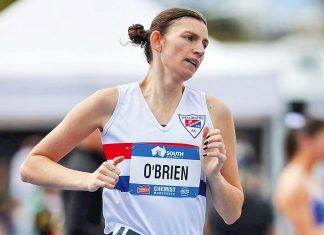By PHILIP HOPKINS
THE landmark federal-state CarbonNet project will start conducting geotechnical surveys this week between Loy Yang and Golden Beach for the underground pipeline that aims to take carbon dioxide emissions from the Latrobe Valley and sequester them under the Bass Strait.
The government entity has been conducting limited surveys on public land and private property this month to gain more technical knowledge about the proposed pipeline corridor. Surveys will be conducted along roadsides, current land access agreement properties and Crown land.
Completed activities include feature and topographic surveying at Loy Yang and Golden Beach, plant and animal surveys, ecological surveys and a high-altitude LIDAR mapping of the route.
The proposed 100-kilometre pipeline – 80km buried onshore and a further 20km offshore – will take liquefied CO2 to a carbon capture and storage hub at Golden Beach, creating a connection for multiple carbon capture projects. The pipeline consultation plan (PLP) received regulatory approval last August.
Up to 110 Gippsland landowners will be directly affected by the proposed pipeline, which will be buried 1.5 metres below the ground surface. It will extend to two drill centres proposed for CarbonNet’s offshore Pelican site, where the CO2 will be stored underground, 1.5km beneath the seabed.
The talks with landowners cover the onshore pipeline part of the project. Once the pipeline crosses the shoreline, consultation on the remaining estimated 20km offshore will be subject to and regulated by the federal government under the Offshore Petroleum and Greenhouse Gas Storage Act 2006.
Onshore, the pipeline will require a 30-metre easement, which will provide access to construction and long-term maintenance. Some areas of vegetation on or outside the easement may need to be cleared for construction. Clearing of vegetation will be avoided where possible, and land rehabilitated to its previous condition after construction.
Funded by the stare and federal governments and begun in 2009, CarbonNet aims to establish a commercial-scale carbon capture and storage (CCS) hub in Gippsland.
The hub will enable new and existing industries in the Latrobe Valley to decarbonise and contribute to Victoria’s 2035 interim emissions reduction target and net-zero emissions by 2045. The process will start with CO2 customers providing compressed CO2 to CarbonNet for transport and storage at the Pelican site.
The governments say a successful CarbonNet project will provide sustainable growth for Gippsland, driving jobs and investment. Potential industries include the manufacturing of hydrogen, fertiliser and bioenergy.
CarbonNet does not include the capture or processing of carbon facilities and only proposes to convey and store CO2 once acquired from customers.











